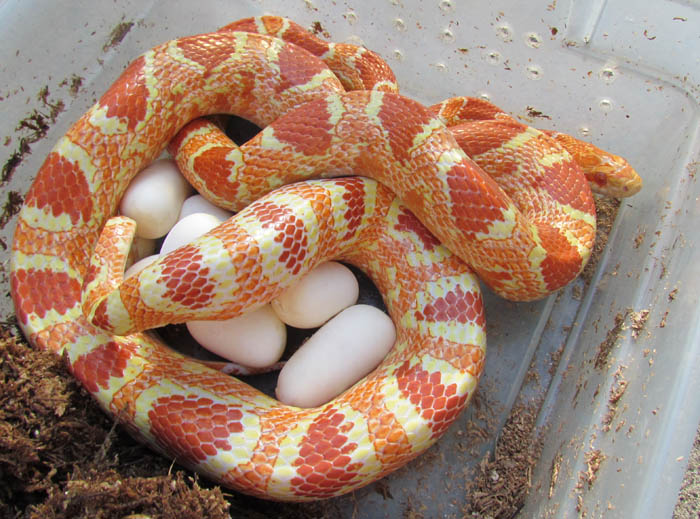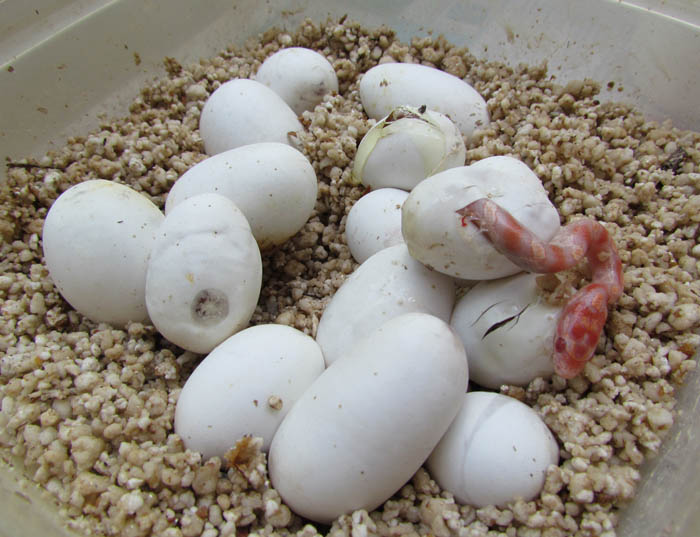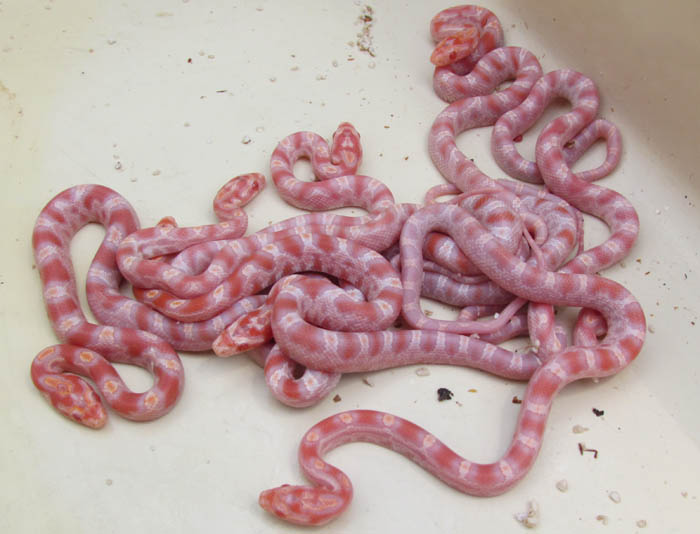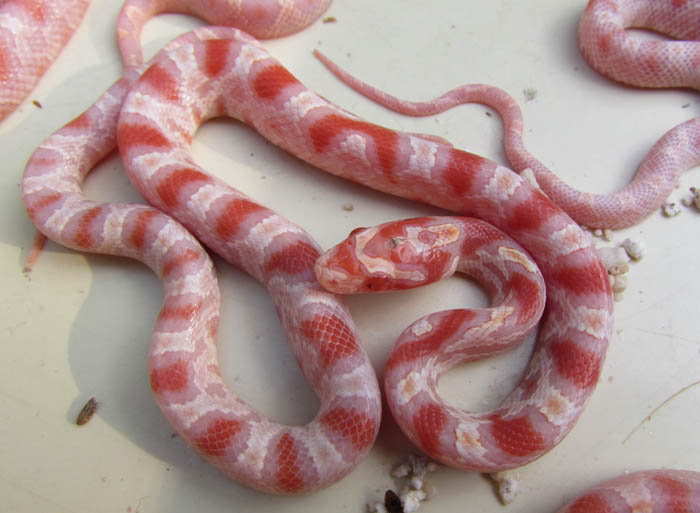In 1953 a wild albino Corn Snake was discovered. Hobbyists call snakes lacking black pigment “albino,” which is different from the all-white albino lab mice and other all-white animals most people associate with the word albino.
Dr. H. Bernard Bechtel was studying genetics and found that the albino gene was a simple recessive genetic trait and was easy to reproduce. The orange coloration made for an especially attractive looking snake. Years later other color and pattern morphs were put in the mix. Here is one of my Corn Snakes laying her eggs in mid-May.
An albino Corn Snake with wide white borders around its blotches is referred to as a “Reverse Okeetee.” Okeetee Corns occur in South Carolina and are known for their wide, black borders. In the printing industry a “reverse” is to print something black in white and vice versa.
Corn Snake eggs generally take 60-70 days to hatch, depending on the temperature. When a snake uses its eggtooth to break through its shell its called “pipping.” Young snakes stay in their eggs for 1 to 3 days after pipping.
Often after hatching snakes are of a dull hue, this is because they go through a shed cycle and there is a layer of filmy liquid between the snake’s new skin and the one its about to cast off. Corn Snake clutches typically have around 16 eggs.
This is what they look like around a week later, after their first shed. Baby Corn Snakes eat newborn mice, small frogs and lizards. Corn Snakes are the world’s most popular pet snakes. Their range of colors and patterns, gentle disposition, convenient adult size and low maintenance attributes make them an ideal pet.




